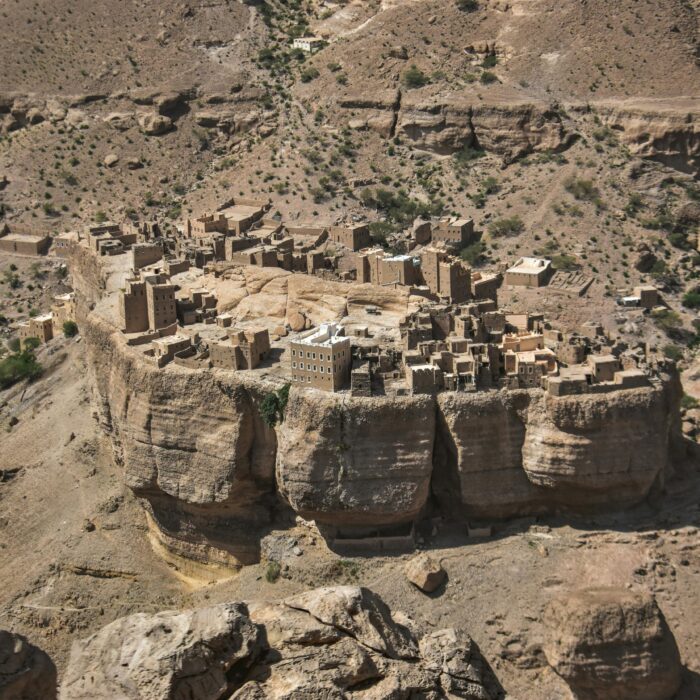For nearly seven decades, the British car brand Lagonda has maintained a somewhat “flickering” existence. It first became associated with the Aston Martin company in 1947 under the leadership of businessman David Brown. Since then, it’s only remembered when the sports car manufacturer decides to introduce something with four doors.

The first such “comeback” happened in the early 1960s but lasted only four years. The most recent attempt is happening right now, before our eyes. A couple of years ago, the Taraf model made its debut, bearing an Arabic name, and by February of this year, 40 of these 12-cylinder cars were manufactured and sold. The car featured here represents the “second attempt,” dating back to the mid-1970s.


The car’s interior is richly finished: there is both wood and leather, and both, of course, are natural.
Back then, the market didn’t particularly demand such models. The early 1970s were challenging for the British automotive industry, affecting everyone from British Leyland to Rolls-Royce. Collaborations between manufacturers were formed and dissolved quickly, venerable brands disappeared one after another. To survive in such turbulent times, tremendous efforts were required.
Aston Martin had just changed ownership, moving from David Brown to a group of independent investors. They urgently needed to establish their position in the market, reassuring everyone that they were still here, operating, and not leaving their segment. They wanted to convey that they were still producing excellent, high-end cars.

The positions of the transmission lever on the tunnel are not marked in any way – they are also displayed on the electronic display.

The only normal, non-electronic indicator in the car is the odometer, the total mileage counter. In addition, the daily mileage is displayed on the digital instrument panel.
The seven handmade Lagonda sedans from 1974 to 1975 were designed by William Towns, a designer who had worked with Aston Martin since the mid-1960s. He was the creator of the successful Aston Martin DBS model, so it’s no surprise that they entrusted the Lagonda project to him. Initially, he contemplated taking the path of least resistance by modifying an existing body, lengthening it, adding an extra pair of doors, and altering the distinctive hood shape slightly. For added effect, he even incorporated subtle elements reminiscent of the front of the aforementioned early 1960s model.
However, realizing that retro references weren’t resonating at the time, Towns made a 180-degree turn toward the avant-garde – and it paid off. The result of this transformation is what you see before you.

There’s no window up and down button on the inner surface of the doors. That’s correct. Rear windows with this feature only appeared in the fourth series of these cars, and this particular specimen belongs to the second series. In such circumstances, a transparent partially opening panel in the roof above the rear seats becomes an urgent necessity. However, there are also two separate air conditioning systems, one for the front seats and one for the rear. On the driver’s door, you’ll find the window control buttons. Opposite them is a panel with openings, covering one of the speakers in the built-in sound system.
Even now, forty years after its debut in London, the car looks futuristic. You can easily imagine the sensation it caused when it first appeared in the mid-1970s. Its low, wedge-shaped profile (with a height of just 1302 mm and an overall length of 5281 mm) set it apart from anything else in the global automotive market. Additional hidden longitudinal elements and a pair of extra crossmembers, both at the front and the rear, significantly improved the body’s rigidity. The operation of the earlier seven vehicles revealed that they had quite a bit of “flex” while on the move.
Under the low, flat hood, they managed to fit the same V8 engine that was in Aston Martin DBS cars, a 5340 cc engine with 280 horsepower at 5000 rpm, coupled with a purchased TorqueFlite automatic transmission from the American Chrysler Corporation. After all, this car wasn’t designed as a sports car, so using an automatic transmission seemed justified. (However, whether it’s a sports car or not, the car achieved a top speed of 230 km/h, and it accelerated from 0 to 60 mph in 8.8 seconds – quite impressive for a four-door sedan.) The suspensions were borrowed from the DBS model but were modified. The car handled corners remarkably well. Disc brakes didn’t pair well with the steel wheels; they tended to overheat. Extra attention had to be given to them, but they were never perfected.
The headlights refused to fit into the flattened front end, so they had to be concealed – or rather, retractable, similar to the ten-year-old Oldsmobile Toronado.

Another later addition: a powerful Yamaha amplifier in the trunk. There’s also a CD player, but it’s discreetly hidden.
The futuristic theme echoed in the exterior design was taken to unbelievable heights inside the cabin. The steering wheel had just one spoke, much like the French Citroen DS, another “car of the future” at the time. In front of this unique steering wheel was an instrument cluster utterly devoid of any dials or gauges. Instead, the driver faced an entirely black panel where only small red digits lit up after turning the ignition key. Towns’ futuristic vision even extended to include a digital instrument panel, although it wasn’t his fault that the digital technology of that era wasn’t very advanced. Neither the LED displays in early cars nor the cathode-ray tubes in later ones were particularly reliable. The cost of developing all this electronics significantly exceeded the expenses incurred in building the car itself – especially since, alongside the avant-garde display, the car was equipped with a touch-sensitive control panel instead of regular switches and buttons.

The hood tilts forward in a ‘Zhiguli’ (Lada) manner, and then the mechanisms for retracting the headlights become visible.

And instead of a heart, a fiery engine, the same one that was installed in Aston Martin DBS cars: eight cylinders, four overhead camshafts, and 280 horsepower, but according to knowledgeable people, it definitely lacked torque at low revs.
The production of Aston Martin Lagonda cars, starting from the first seven units, was divided into four different series. The car featured here belongs to the second series, the most numerous one. From 1976 to 1985, they produced 458 cars in this configuration, and it’s this version that began exporting to the United States in 1972, equipped with the necessary lighting features to comply with U.S. standards. The third series was produced only in 1986-1987 and featured a fuel injection system. Only 75 such cars were built, and externally, they were indistinguishable from the model on our pages. Finally, the fourth series, which debuted at the Geneva Motor Show in March 1987, was slightly redesigned by the author himself, William Towns. He carefully smoothed out some of the sharpest angles of the body, eliminated the double longitudinal stamping that ran along the entire side of the car from the front to the rear, and finally got rid of the retractable headlights, which weren’t very practical in bad weather. The fourth-series cars were easiest to distinguish from the rest when viewed from the front since they had six headlights, three on each side of the faux radiator. Until January 1990, they produced 105 fourth-series cars.

This is the factory plate with the serial number and specifications. The two bottom lines indicate the manufacturer’s address and the instruction to ‘always provide the above VIN and engine number in all correspondence regarding maintenance and repair.

The author’s mark of the person who assembled the engine for this specific car.
Less than six and a half hundred cars produced in a quarter of a century may not be a record. However, given its release price, nearly on par with Rolls-Royce or Bentley cars of the time, it was difficult to expect anything else. The model successfully fulfilled its intended purpose: in the first 18 months after its debut, over 170 pre-orders were placed, each accompanied by a deposit of two thousand British pounds. By fulfilling these orders, by 1979, the production volume of the Lagonda model had grown to forty-six percent of Aston Martin’s overall business in terms of units produced. It also made money, and most importantly, it put the company back in the spotlight, just as the new owners had hoped. The customer base expanded as well; wealthy oil magnates from the Middle East were not only willing to make a deposit but also pay in cash on the spot for their exclusive car, just to get their hands on it as quickly as possible.
The current Lagonda car seems to be aimed at the same type of clientele. It’s no coincidence that it bears the Arabic name “Taraf,” which roughly translates to “utmost luxury.” Its debut, too, didn’t happen in Geneva or London but in Dubai…

Photo: Sean Dugan, www.hymanltd.com
This is a translation. You can read an original article here: Эксклюзив: Aston Martin Lagonda в рассказе Андрея Хрисанфова

Published December 06, 2023 • 7m to read





